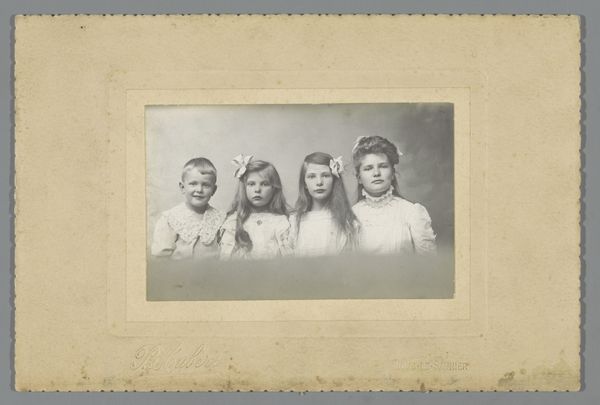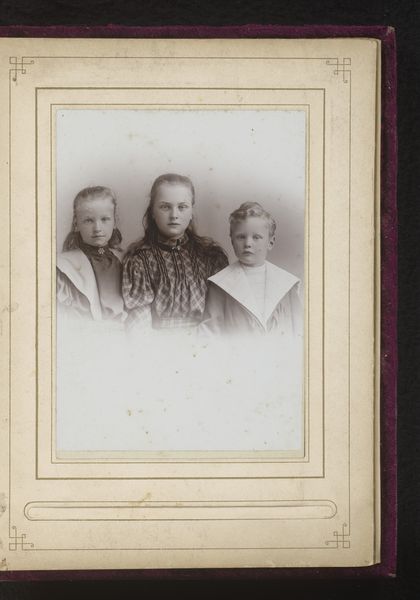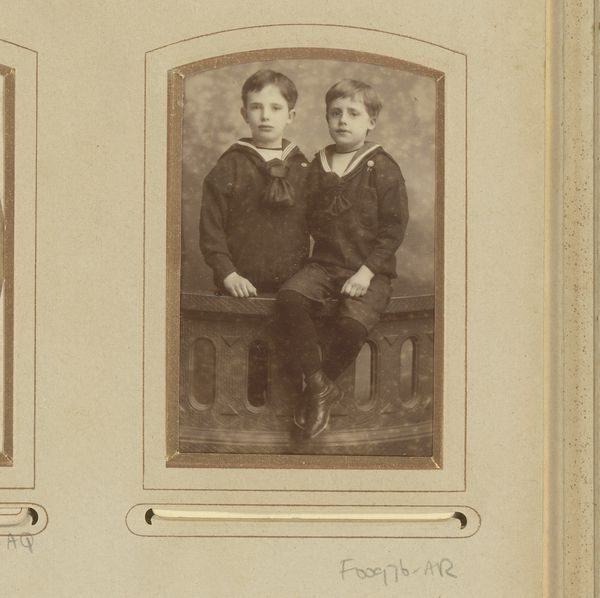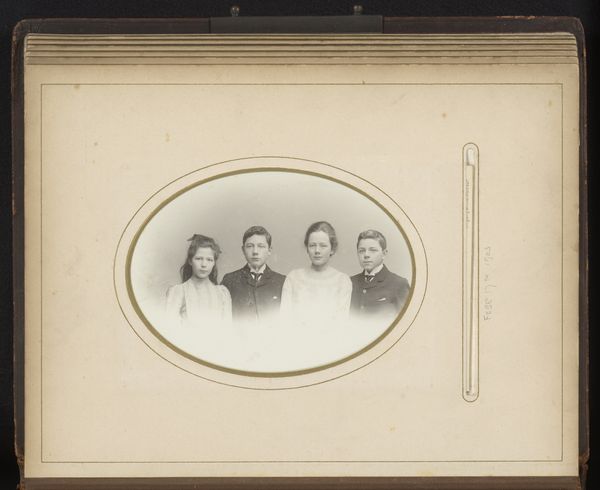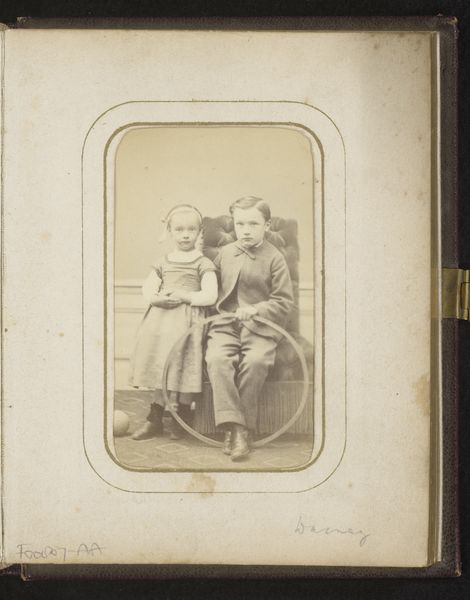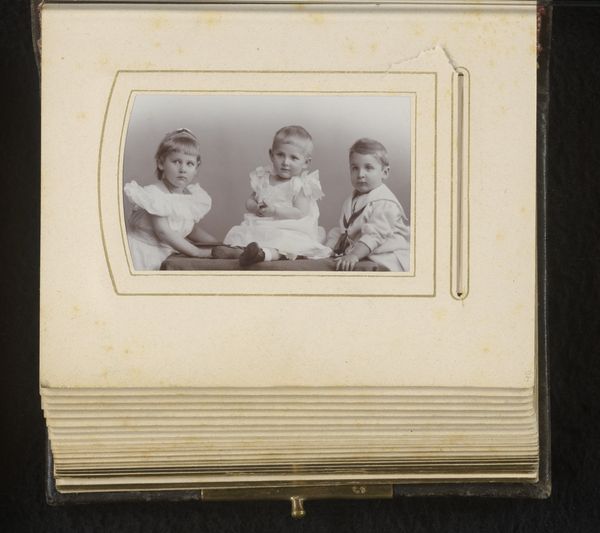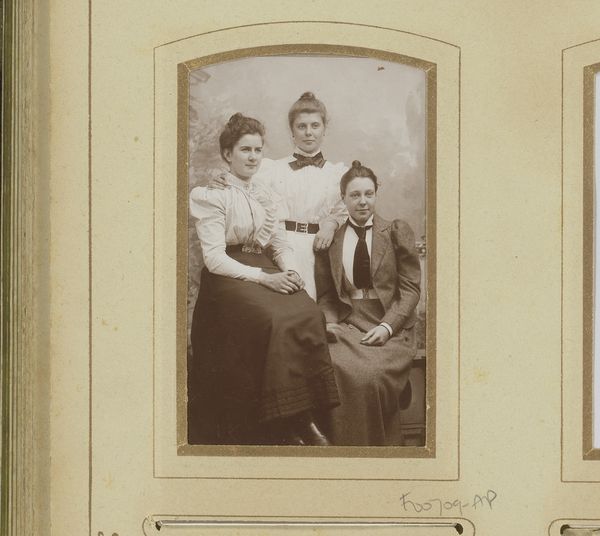
Dimensions: height 81 mm, width 52 mm
Copyright: Rijks Museum: Open Domain
Curator: Henri Last, a Dutch photographer active at the turn of the century, made this portrait of three children around 1897. Editor: What strikes me first is the solemnity of their faces; a peculiar mix of childhood innocence and adult reserve. There’s almost a stillness or melancholy about them. Curator: Yes, group portraits from this era often reflect the rigid social expectations placed on children. They’re posed in a way that emphasizes restraint and decorum, elements very much a product of the late 19th century, a society grappling with rapidly shifting class structures. Their clothes, like the sailor suits worn by the boys, reflect status. Editor: It's interesting how even clothing acts as visual language here; the sailor stripes are maritime, suggesting possible ties to colonial ventures. Moreover, the choice of photography itself as the medium—the ability to fix an image in time—speaks to the era’s increasing obsession with documentation, identity, and permanence. Curator: I agree. These visual cues definitely place them within a specific social milieu and are indicative of the anxieties of a period on the cusp of profound transformation. Consider that rapid industrialization created wealth but also mass inequality. Representations like these attempt to both record and solidify idealized class aspirations. Editor: Also, the uniformity is key. Those matching outfits on the boys create a visual shorthand for family unity, tradition and aspiration. This reminds me of images in early psychology, seeking types more than individuals. Even their similar haircuts flatten the individual. It makes me consider larger questions about societal norms that shaped their identities, too. Curator: Precisely! What this portrait reveals to me is how the personal and political constantly inform one another, each facial expression becoming part of a much larger socio-historical tapestry. Editor: To me, it's like looking into a visual mirror reflecting aspirations and anxieties of the age. It offers insight into our ongoing pursuit of identity.
Comments
No comments
Be the first to comment and join the conversation on the ultimate creative platform.

